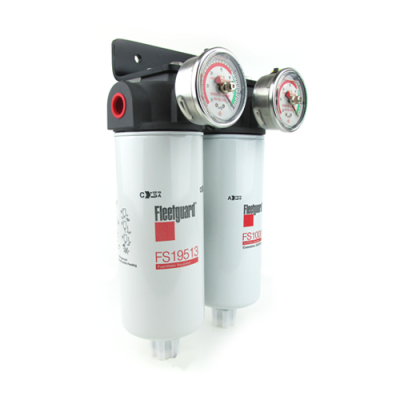No Smitty nothing so sophisticated as a black light and color chart.
A simple small LED flash light shined through the fuel gives a good first level clue of any beginning problems.
It only takes seconds when doing prestart ER checks.
Interesting - we have run vac gages on multiple filters on a few boats now and have found very little correlation or value in looking at the color of fuel vs the actual loading of fuel filters as measured in inches of vacuum.
We have found viewing filter bowls that have been static for hours can be even more misleading.

